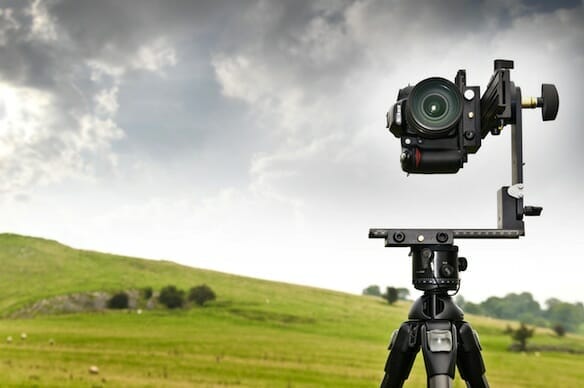
Toto G500. Image credit: GalleryShooter.
A General Buying Guide for Camera Tripods
By Keith Thomson
The function of a camera tripod is pretty simple. It holds the camera in the precise position you choose preventing the mini-movements or shakes of our hands. This allows us to hold the frame steady and slow down the shutter speed therefore, more light enters and “burns” onto the sensor or film with a smaller aperture (higher f-stop) and a lower ISO (less sensitivity to light); thus giving us sharper images with more depth and texture. This is especially true for subjects that are farther off in the distance because while zooming in magnifies the subject, it also magnifies movement within the frame. This is assuming the subject, too, is motionless. If the subject is in motion, then a tripod can also help record its motion with a “streaked” or “smeared” subject against an inert background.
Like all camera gear, there are a variety of tripods in many price ranges for their difference in reliability. The first questions to ask yourself are always about WHAT you expect to use a tripod for. If you’re only shooting with only a point and shoot camera or your cellphone, a POCKET TRIPOD should do the trick. These are NOT sturdy or sophisticated, but are very small and lightweight. They can be great for the amateur and usually cost less than $20.
For the more sophisticated user, you don’t want your tripod falling over because of the weight of your SLR, uneven ground or wind, but also, do you expect travel with it? If so, COLLAPSED SIZE and WEIGHT are going to be a factor. I attach my lightweight, aluminum PORTABLE TRIPOD to the outside of my big “gear backpack” with bungees. It’s usually enough for most situations, though I also have another, bulkier, sturdier one that I have to carry in hand when the task entails.
Materials: What the Tripod is Made of
The COMMON MATERIAL, the material it’s mostly made with, has an effect on stability, durability and price. PLASTIC is the least expensive and a cheap tripod can be found for as little as $30, but they are the least durable and the least stable, but if you’re putting a lightweight point and shoot camera on it, it should do the trick. ALUMINUM is stronger, sturdier and more durable, often running between $100-$200, and are used by amateurs as well as professionals. The ideal, sturdier, but still lightweight CARBON FIBER tripods are the top of the line, but can cost hundreds of dollars. These are used for professional work, in nature, in a studio and for video work.
Tripod Mechanics
All tripods share the same basic mechanics. The LEGS extend two sections and are contracted or extended with either clip or twist locks. Twist locks are more “compact,” but then you also need two hands to adjust the legs. The legs can each be adjusted separately, so if you’re on uneven ground, you can alter each leg so that your tripod still levels the camera. Most tripods have a BUBBLE LEVEL, but if not, you can buy one separately. RUBBER NON-SLIP FEET are usually used for “indoor tripods” and SPIKED FEET for out door, the spikes able to dig into terrain.
The MAXIMUM HEIGHT of the tripod varies. On a cheaper model, once the legs are extended, that’s as high as you can go, but on more advanced models, there is a CENTER POST that raises and lowers, often with a CRANK ARM that folds inward, locking the post in place. Remember, the higher raised the center post, the less stable your set-up will be.
The HEAD is the uppermost unit and possibly the most important. This is the piece that mounts your camera to the tripod and allows control over camera movement. You can generally find them in the range of $15-$50. The most common are PAN/TILT HEADS. These allow the camera to move both up and down, as well as side to side and can be loosened or tightened by the turn of the GRIP. Some of these are also classified as FLUID HEADS, as they use a liquid, mini-hydraulic system to enable smooth movement. A BALL HEAD can move 360 degrees, and therefore into a range of positions, though they are often simple constructions and don’t always have a true line of pan or tilt. A QUICK RELEASE HEAD has a lever that allows the camera to detach from the tripod with the head still attached to it. You can shoot hand held, but then just as easily return the camera to its place on top of the tripod.
A MONOPOD is a single pole with a head on it that can offer some stability, and a lot of portability. They are also less conspicuous than a tripod when trying to keep your “photographer’s presence” as discreet as possible.
Other Considerations
Many telephoto lenses are heavier than the camera body itself and because of its length, can cause imbalance and instability; a COLLAR RING attaches the lens to the tripod for support.
Now that you’ve decided you want to add a tripod to your gear list, you’ve got some head scratching to do. Which one is best for you? With which functions and accessories? And why?…Part of the fun in learning photography is how your “system” allows you to improve your image making. So go to it! Go experiment!



